GrabCAD

Trailer Axle with Idler Hubs - 5 on 4-1/2 Bolt Pattern – 1300mm Long - 2,000 lbs / 900 Kg
by GrabCAD
Last crawled date: 1 year, 2 months ago
Specs:
Weight capacity: 2,000 lbs
Spring-center-to-spring-center length: 1050mm
Axle diameter: 1-3/4"
Wheel size: 13" to 15"
There are multiple ways to measure the length of an axle beam, but the hub-face-to-hub-face and spring-center-to-spring-center lengths are the most accurate.
Hub face (A) refers to the length of the axle measured from the base of one wheel stud to the base of the wheel stud on the opposite side of the axle (when hubs are mounted on the beam).
The spring center (B) is the approximate width of your trailer. It is measured from the center of the spring seat on one side of the axle to the center of the seat on the other. This axle beam comes with the spring seats welded on.
If you are replacing your trailer's axle, you should be able to figure out which type you need by determining your trailer's capacity, the bolt pattern of your wheels, the brake type and the aforementioned lengths.
Escuber axles are made of high-strength steel and come with spindles and spring seats welded on. The spring seats are attached to the underside of the axle so that the leaf springs (sold separately) can mount beneath the axle. The result of this underslung design is a trailer that rides a bit lower for quick and easy loading and unloading.
Each axle is manufactured to create a certain camber angle. This ensures that the angle of the wheels is correct for your towing needs.
Because the primary concern when towing is maintaining controlled, in-line movement, each axle is made so that your trailer's tires will run along the pavement evenly, with contact across the width of the tread.
The result is excellent straight-line acceleration for steady, in-line tracking. You might notice the bend near the center of the axle; this is what ensures the proper camber angle. Having the center ride a bit higher and the sides of the axle bent lower allows the axle to give just enough to compensate for the load.
Weight capacity: 2,000 lbs
Spring-center-to-spring-center length: 1050mm
Axle diameter: 1-3/4"
Wheel size: 13" to 15"
There are multiple ways to measure the length of an axle beam, but the hub-face-to-hub-face and spring-center-to-spring-center lengths are the most accurate.
Hub face (A) refers to the length of the axle measured from the base of one wheel stud to the base of the wheel stud on the opposite side of the axle (when hubs are mounted on the beam).
The spring center (B) is the approximate width of your trailer. It is measured from the center of the spring seat on one side of the axle to the center of the seat on the other. This axle beam comes with the spring seats welded on.
If you are replacing your trailer's axle, you should be able to figure out which type you need by determining your trailer's capacity, the bolt pattern of your wheels, the brake type and the aforementioned lengths.
Escuber axles are made of high-strength steel and come with spindles and spring seats welded on. The spring seats are attached to the underside of the axle so that the leaf springs (sold separately) can mount beneath the axle. The result of this underslung design is a trailer that rides a bit lower for quick and easy loading and unloading.
Each axle is manufactured to create a certain camber angle. This ensures that the angle of the wheels is correct for your towing needs.
Because the primary concern when towing is maintaining controlled, in-line movement, each axle is made so that your trailer's tires will run along the pavement evenly, with contact across the width of the tread.
The result is excellent straight-line acceleration for steady, in-line tracking. You might notice the bend near the center of the axle; this is what ensures the proper camber angle. Having the center ride a bit higher and the sides of the axle bent lower allows the axle to give just enough to compensate for the load.
Similar models
grabcad
free

Trailer Axle 1050 mm Long 2,000 lbs
...t higher and the sides of the axle bent lower allows the axle to give just enough to compensate for the load.
www.escuber.com.au
grabcad
free

TRAILER LEAF SPRING AXLE KIT 1500 Lbs. Capacity
...t 1500 lbs. capacity
grabcad
hub-face-to-hub-face length: 52-1/2"
bolt pattern: 5 on 4-1/2"
weight capacity: 1,500 lbs
grabcad
free

TRAILER LEAF SPRING AXLE KIT 1875 Lbs. Capacity
...t 1875 lbs. capacity
grabcad
hub-face-to-hub-face length: 57-1/2"
bolt pattern: 5 on 4-1/2"
weight capacity: 1,875 lbs
grabcad
free

Spring/Hub Axle Kit for Marine and Utility Trailers Item# 48186 TIE DOWN ENGINEERING
...ineering
grabcad
ultra-tow 2000-lb. capacity complete axle kit — 67in. hubface, 55in. spring center, 5-stud pattern, 4.5in. hubs
grabcad
free

4-Leaf Double-Eye Spring for 2,000-lb Trailer Axles - 26" Long
...nd elongate as they wear, this new spring may not exactly match the old one, and the alignment of your trailer could be affected.
grabcad
free

4-Leaf Double-Eye Spring for 2,000-lb Trailer Axles - 26" Long
...nd elongate as they wear, this new spring may not exactly match the old one, and the alignment of your trailer could be affected.
grabcad
free

Trailer Axle Assembly, Leaf Spring, 2200 lbs
...le is 60" hub to hub, includes tapered roller bearings, leaf springs, hangers, u-bolts. all parts sourced from etrailer.com
grabcad
free

Trailer Half Torsion Axle, Left Side, 3500 lb
... torsion axle, left side, 3500 lb
grabcad
trailer half torsion axle, left side, 3500 lb, wheel hub is 5 bolt on 4.5" b.c.d.
grabcad
free

Trailer Half Torsion Axle, Right Side, 3500 lb
...orsion axle, right side, 3500 lb
grabcad
trailer half torsion axle, right side, 3500 lb, wheel hub is 5 bolt on 4.5" b.c.d.
grabcad
free

Trailer Idler Hub Assembly for 2K Lbs Axles 13" to 15" Wheels - 5 on 4-1/2"
...attern is the number of bolt holes.
the second number denotes the diameter, in inches, of the circle
on which the bolt holes sit.
1300Mm
3ddd
free

Dining table valentino
...eichholtz , обеденный , круглый dinining table valentino d 1300mm x h 750mm polished stainless steel/ black glass manufacture:...
3d_export
$5

universal robot ur10
...both high payload (12.5 kg) lift and long reach (1300mm which makes it well suited for a wide range...
3ddd
$1

Диван Bolton от Poliform m02
...плед polys: 274528 polygonal quads only габаритные размеры: x-2320mm, y-1300mm z-800mm. урок по созданию:http://3ddd.ru/blog/post/modielirovaniie_miaghkoi_miebieli сайт...
3d_export
$7

Project-X flamethrower
...model dimensions in millimeters: width: 185mm; height: 729mm; length: 1300mm the model is divided into several parts to improve...
3d_export
$5

Edgeworthia Chrysantha Grandiflora-8 different bush
...bush<br>8 different 3d models in the scene<br>height: 1000mm & 1300mm & 1700mm & 650mm & 1300mm 1400mm & 1300mm...
3d_export
$19

L-shape Desk with Side Bookshelves
...vertex with more than 5 edges: 0<br>object:<br>- dimension mm: 1300mm x 1359mm x 720mm<br>- dimension cm: 130cm x 135.89cm...
3d_export
$28

ottomans bench l luxury hallway bench furniture
...download and render out-of-the-box.<br>chair v25 measure<br>+ height 500mm<br>+ length 1300mmlt;br>+ width 485mm<br>----------------------------------<br>finish options: elegant striped velvet fabric and metal...
thingiverse
free

Icon A5 1300mm wall mount by Dypsyprinter
...y dypsyprinter
thingiverse
wall mount holder for 1300mm icon a5 from horrizon hobby.
g-codes for prusa mk3
printed from any pla
3dbaza
$4

Arper pouf 1300mm (161225)
...aid)<br>polys: 64 072<br>render: v-ray 3.60.03<br>unique texture names: yes<br>unique material names: yes
thingiverse
free

Icon A5 1300mm wall mount v2 by Dypsyprinter
...icon a5 1300mm wall mount v2 by dypsyprinter
thingiverse
printed from pla
g-code for prusa mk3
Idler
3d_export
$20

telescopic stacker belt conveyor
...and the actual components are as follows cema c idler cema c impact roller dodge bearing avoid tension bearing...
3d_export
$49

Liebherr R9250 Tracks - Crawler
...main parts: bottom rollers car bodies final drives top idler front idlers slewing rings-turntable bearings sprockets text track chains...
3d_export
$119

JD - 953MH Tracked Log Loader
...boby with engine<br>main body bolts<br>main body grilles<br>pedals<br>right - front idlerlt;br>right - rear idler<br>right track chain<br>right track links<br>right track protector<br>right...
3d_export
$129

JD - 959MH Tracked Feller Buncher
...boby with engine<br>main body bolts<br>main body grilles<br>pedals<br>right - front idlerlt;br>right - rear idler<br>right track chain<br>right track links<br>right track protector<br>right...
3d_export
$119

JD - 959MH Tracked Log Loader
...boby with engine<br>main body bolts<br>main body grilles<br>pedals<br>right - front idlerlt;br>right - rear idler<br>right track chain<br>right track links<br>right track protector<br>right...
3d_export
$119

JD - 953MH Tracked Harvester
...tool - lower<br>moving limbing tool - upper<br>pedals<br>right - front idlerlt;br>right - rear idler<br>right feed rollers<br>right track chain<br>right track links<br>right...
thingiverse
free

Idler seat by jcen517
...idler seat by jcen517
thingiverse
idler seat
thingiverse
free

Idler by GEON_3D
...idler by geon_3d
thingiverse
idler para extrusor 1,75
imprimir en abs, petg o cualquier material resistente
thingiverse
free

wade idler by nautilux
...wade idler by nautilux
thingiverse
wade idler reforzado
thingiverse
free

Idler Frame by Dinusha
...idler frame by dinusha
thingiverse
idler frame specially for the belt conveyors.
000
turbosquid
$15

Sofa 000
...free 3d model sofa 000 for download as 3ds, max, obj, and fbx on turbosquid: 3d models for games, architecture, videos. (1401892)
turbosquid
$40

TIRE 000
... available on turbo squid, the world's leading provider of digital 3d models for visualization, films, television, and games.
turbosquid
$10

chair 000
... available on turbo squid, the world's leading provider of digital 3d models for visualization, films, television, and games.
turbosquid
$32

MOD A 000.max
... available on turbo squid, the world's leading provider of digital 3d models for visualization, films, television, and games.
turbosquid
free

warship 000.blend
... available on turbo squid, the world's leading provider of digital 3d models for visualization, films, television, and games.
turbosquid
$1

electric engine BLDC with water cooling for printing 10 000 W stl
...with water cooling for printing 10 000 w stl for download as on turbosquid: 3d models for games, architecture, videos. (1632791)
3ddd
$1

Ручки для кухни Giusti WMN.721Y.128.XXX и WPO.721X.000.XXX
...установить свою степень сглаживания, изначально установлено 2.
в архиве библиотека материалов для ручек. всё настроено для vray.
3d_export
$5

baby
...3dexport baby head<br>poligon min 106 468 x 7 473 000 , max 6 859 000 x 7 473...
3ddd
$1

Статуетка
...статуетка 3ddd 000 00000 0000 00000 0 0 000 0 0 0...
3d_export
$6

Rome Centurion Sculpt
...sculpt 3dexport rome centurion high poly model .ztl 75 000 000...
Lbs
turbosquid
$20

MT-LB
...b
turbosquid
royalty free 3d model mt-lb for download as stl on turbosquid: 3d models for games, architecture, videos. (1406982)
3ddd
$1

Oslo XL LB
...oslo xl lb
3ddd
камин , oslo
камин oslo xl lb
3ddd
$1

ORLANDO CF LB
...orlando cf lb
3ddd
новый стиль
новый стиль - orlando cf lb
3ddd
$1

NADIR extra CF LB
...nadir extra cf lb
3ddd
новый стиль
новый стиль - nadir extra cf lb
3ddd
$1

RAPSODY extra CF LB
...rapsody extra cf lb
3ddd
новый стиль
новый стиль - rapsody extra cf lb
3d_export
$8

Pendant LB 3D Model
...odel
3dexport
pendant lb heart
pendant lb 3d model download .c4d .max .obj .fbx .ma .lwo .3ds .3dm .stl od.regina 110125 3dexport
turbosquid
$200

MT-LB Camouflage
... mt-lb camouflage for download as 3ds, max, obj, fbx, and stl on turbosquid: 3d models for games, architecture, videos. (1478422)
turbosquid
$5

8 lb Weight
... available on turbo squid, the world's leading provider of digital 3d models for visualization, films, television, and games.
3ddd
$1

LIBAO LB-D06
...libao lb-d06
3ddd
libao , парта
сайт: www.libaomebel.ru
3ddd
free

LIBAO LB-D05
...libao lb-d05
3ddd
libaо , парта
сайт: www.libaomebel.ru
900
3ddd
$1

TOCCATA 900
...toccata 900
3ddd
sattler , toccata
люстра toccata размер: ø 900 mm
3ddd
$1

Pioneer CDJ-900
...pioneer cdj-900
3ddd
pioneer , микшер
pioneer cdj-900
turbosquid
$9

Flowerpot 900
...free 3d model flowerpot 900 for download as max, obj, and fbx on turbosquid: 3d models for games, architecture, videos. (1237459)
turbosquid
$6

Bookcase 900
... free 3d model bookcase 900 for download as max, obj, and fbx on turbosquid: 3d models for games, architecture, videos. (1469868)
turbosquid
$25

Maggiolina-900
... available on turbo squid, the world's leading provider of digital 3d models for visualization, films, television, and games.
3ddd
$1

Valente Lacrima 900
... lacrima , умывальник
раковина и мебель из коллекции lacrima.
размер 900.
3ddd
$1

Downy parfum 900 ml
...downy parfum 900 ml
3ddd
downy parfum 900 ml
3ddd
free

Morelato 900
...morelato 900
3ddd
morelato
кресло3896, коллекция: '900,бренд:morelato,страна:италия, размер: 86х83х103 см.
turbosquid
$30

Morelato 900 SIDEBOARD
...e 3d model morelato 900 sideboard for download as max and fbx on turbosquid: 3d models for games, architecture, videos. (1356991)
turbosquid
$6

Built-in bookcase 900
...odel built-in bookcase 900 for download as max, obj, and fbx on turbosquid: 3d models for games, architecture, videos. (1469749)
Axle
3d_export
$5

axle knob
...axle knob
3dexport
axle knob
turbosquid
$3

Axle-loadLimitroadsign
...loadlimitroadsign for download as 3ds, dae, fbx, obj, and stl on turbosquid: 3d models for games, architecture, videos. (1532898)
3d_export
$30

Car axle 3D Model
...e transmission drive power assembly gear rear wheel step maya softimage fbx vray
car axle 3d model sunshineweilian 99506 3dexport
3d_ocean
$12

Exploded Half Axle
.... the model is built out of quads and is subdivisable. different parts are separate for ease of handle. the model comes in 5 f...
turbosquid
$50

Trommel_1 Line Axle
... available on turbo squid, the world's leading provider of digital 3d models for visualization, films, television, and games.
turbosquid
$39

DUALLY AXLE AND DRIVESHAFT
... and driveshaft for download as max, blend, fbx, obj, and 3ds on turbosquid: 3d models for games, architecture, videos. (1653704)
3d_ocean
$9

Half Axle
...el is built out of quads and is subdivisable. different parts are separate for ease of handle. the model comes in 4 formats: -...
3d_export
$50

Exploded Half Axle 3D Model
...shaft drive gearbox wheel velocity constant engine chassis part planetary
exploded half axle 3d model dragosburian 93254 3dexport
turbosquid
$50

Trommel 2 Line Axles
... available on turbo squid, the world's leading provider of digital 3d models for visualization, films, television, and games.
turbosquid
$39

rear axle dual rim
... available on turbo squid, the world's leading provider of digital 3d models for visualization, films, television, and games.
Hubs
3d_export
free

hub
...hub
3dexport
realistic 3d model of hub. you can use this model in your automotive or mechanical projects.
design_connected
$4

Hub 02
...hub 02
designconnected
glas italia hub 02 dining tables computer generated 3d model. designed by piero lissoni.
turbosquid
$8

Electricity Hub
...id
royalty free 3d model electricity hub for download as fbx on turbosquid: 3d models for games, architecture, videos. (1298030)
turbosquid
$2

Gokart Hub
...bosquid
royalty free 3d model gokart hub for download as ige on turbosquid: 3d models for games, architecture, videos. (1497617)
turbosquid
free

Desert hub
...squid
free 3d model desert hub for download as blend and fbx on turbosquid: 3d models for games, architecture, videos. (1634736)
design_connected
$18

UMBRA Hub Ladder
...umbra hub ladder
designconnected
umbra hub ladder computer generated 3d model.
turbosquid
$48

hub-dxf
... available on turbo squid, the world's leading provider of digital 3d models for visualization, films, television, and games.
turbosquid
$25

Shoulder Hub
... available on turbo squid, the world's leading provider of digital 3d models for visualization, films, television, and games.
turbosquid
$20

BMX Hub
... available on turbo squid, the world's leading provider of digital 3d models for visualization, films, television, and games.
3d_ocean
$5

Stairwell Hub
... is a low polygonal model. - poly count: 323 - formats: max /obj /fbx/3ds/dxf - high detail was preserved with 2048×2048 textu...
Trailer
archibase_planet
free

Trailer
...ailer hindcarriage motorcycle trailer hind-carriage
trailer n070414 - 3d model (*.gsm+*.3ds+*.max) for exterior 3d visualization.
archibase_planet
free

Trailer
...iler forestry trailer hindcarriage hind-carriage
trailer forestry n260614 - 3d model (*.gsm+*.3ds) for exterior 3d visualization.
archibase_planet
free

Trailer
...trailer
archibase planet
trailer
trailer n260907 - 3d model (*.gsm+*.3ds) for interior 3d visualization.
archibase_planet
free

Trailer
...trailer
archibase planet
lorrry truck trailer
trailer n190609 - 3d model (*.3ds) for 3d visualization.
archibase_planet
free

Trailer
...archibase planet
trailer hind-carriage hindcarriage
box trailer 1 n120614 - 3d model (*.gsm+*.3ds) for exterior 3d visualization.
3ddd
$1

Trailer
...trailer
3ddd
trailer , трейлер
маленький та зручний торговий вагончик. текстури є.
3d_export
$5

an old trailer
...an old trailer
3dexport
an old trailer
3d_export
$5

Model of a trailer
...model of a trailer
3dexport
model of a trailer
turbosquid
$50

trailer
...turbosquid
royalty free 3d model trailer for download as c4d on turbosquid: 3d models for games, architecture, videos. (1643198)
turbosquid
$35

Trailer
...turbosquid
royalty free 3d model trailer for download as fbx on turbosquid: 3d models for games, architecture, videos. (1213660)
Kg
turbosquid
$5

Kettlebell 10 kg
...ll 10 kg for download as blend, blend, 3ds, dae, fbx, and obj on turbosquid: 3d models for games, architecture, videos. (1583701)
turbosquid
$5

Kettlebell 7.5 kg
...l 7.5 kg for download as blend, blend, 3ds, dae, fbx, and obj on turbosquid: 3d models for games, architecture, videos. (1583699)
turbosquid
$5

Kettlebell 5 kg
...ell 5 kg for download as blend, blend, 3ds, dae, fbx, and obj on turbosquid: 3d models for games, architecture, videos. (1583695)
turbosquid
$5

Kettlebell 2 kg
...ell 2 kg for download as blend, blend, 3ds, dae, fbx, and obj on turbosquid: 3d models for games, architecture, videos. (1583690)
turbosquid
$5

Kettlebell 1 kg
...ell 1 kg for download as blend, blend, 3ds, dae, fbx, and obj on turbosquid: 3d models for games, architecture, videos. (1583687)
3ddd
$1

SIEMENS KG 49NS50
...siemens kg 49ns50
3ddd
siemens , холодильник
текстуры в архиве.
turbosquid
$30

Wouxun KG-UVD1P radio
...ouxun kg-uvd1p radio for download as 3ds, obj, fbx, and blend on turbosquid: 3d models for games, architecture, videos. (1198344)
turbosquid
$39

Gorilla Kettlebell 20 Kg
... available on turbo squid, the world's leading provider of digital 3d models for visualization, films, television, and games.
turbosquid
$5

Fixed Barbell 5 kg
... barbell 5 kg for download as blend, blend, 3ds, dae, and obj on turbosquid: 3d models for games, architecture, videos. (1584064)
turbosquid
$5

Gas LPG 3 Kg
...odel gas lpg 3 kg for download as c4d, 3ds, dae, fbx, and obj on turbosquid: 3d models for games, architecture, videos. (1327329)
Pattern
3d_export
$10

pattern
...pattern
3dexport
old carved pattern
3d_ocean
$4

Window Pattern
...c4d cinema4d design element geometry geometry pattern grill pattern pattern vray vrayforc4d window pattern
window or wall pattern
design_connected
$18

Pattern
...pattern
designconnected
emu group pattern computer generated 3d model. designed by levy, arik.
3ddd
$1

pattern
...pattern
3ddd
решетка
1000x1000
3ddd
$1

Stucco pattern
...stucco pattern
3ddd
розетка
stucco pattern
3d_ocean
$10

Pattern
...pattern
3docean
extrude
national ornament
turbosquid
$6

Pattern
... available on turbo squid, the world's leading provider of digital 3d models for visualization, films, television, and games.
3d_export
$5

pattern
...pattern
3dexport
cnc router --3d printer
turbosquid
$25

Wall Pattern A05 (pattern only)
... available on turbo squid, the world's leading provider of digital 3d models for visualization, films, television, and games.
turbosquid
$25

Wall Pattern A04 (pattern only)
... available on turbo squid, the world's leading provider of digital 3d models for visualization, films, television, and games.
Bolt
3d_export
$2
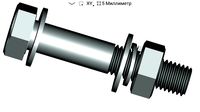
bolt
...
bolt - a fastener in the form of a rod with an external thread, usually with a hex head wrench, forming a connection with a nut.
3d_export
$5

bolted ring
...bolted ring
3dexport
bolted ring
3d_export
$5

royal bolt
...royal bolt
3dexport
royal bolt
turbosquid
$10
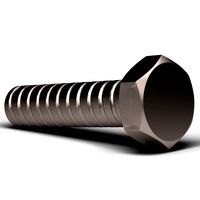
Bolt
...lty free 3d model bolt for download as max, c4d, obj, and fbx on turbosquid: 3d models for games, architecture, videos. (1681373)
turbosquid
$10
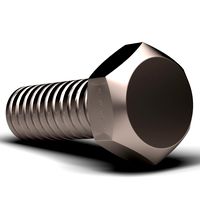
Bolt
...lty free 3d model bolt for download as max, c4d, obj, and fbx on turbosquid: 3d models for games, architecture, videos. (1680879)
turbosquid
$10
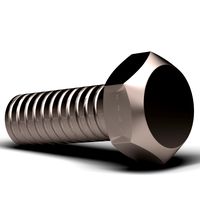
Bolt
...lty free 3d model bolt for download as max, c4d, obj, and fbx on turbosquid: 3d models for games, architecture, videos. (1680869)
turbosquid
$10
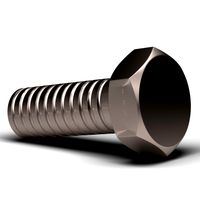
Bolt
...lty free 3d model bolt for download as max, c4d, obj, and fbx on turbosquid: 3d models for games, architecture, videos. (1680866)
turbosquid
$10
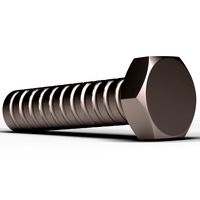
Bolt
...lty free 3d model bolt for download as max, c4d, obj, and fbx on turbosquid: 3d models for games, architecture, videos. (1680860)
turbosquid
$10
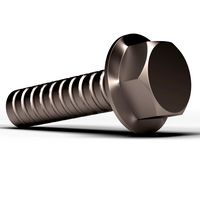
Bolt
...lty free 3d model bolt for download as max, c4d, fbx, and obj on turbosquid: 3d models for games, architecture, videos. (1680480)
turbosquid
$13
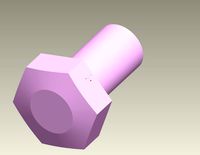
bolt
... available on turbo squid, the world's leading provider of digital 3d models for visualization, films, television, and games.
Long
3d_export
free

Long dress with long sleeves
...long dress with long sleeves
3dexport
long dress with a side cut and long sleeves.<br>with uv. no textures
3d_export
$5

long foot
...long foot
3dexport
long foot
design_connected
$16

Long John
...long john
designconnected
rubn long john computer generated 3d model. designed by hoflin, niclas.
3d_export
$5

Long monster
...long monster
3dexport
i`m beginer in 3d modeling.this is my first project - long monster.
design_connected
$18

Long Pot
...long pot
designconnected
ligne roset long pot computer generated 3d model. designed by sempé, inga.
design_connected
$16

Welles Long
...welles long
designconnected
gabriel scott welles long computer generated 3d model. designed by kakon, gabriel.
3ddd
free

Extra Long
...ики fantoni, италия. имеет подсветку ( зеленая или белая). передняя панель выполнена из аккустических панелей.
текстуры в архиве.
3ddd
$1

Светильник Long and Hard
...к long and hard
3ddd
flos , long and hard
светильник long and hard от flos, с текстурами
turbosquid
$4

Long dagger
...urbosquid
royalty free 3d model long dagger for download as on turbosquid: 3d models for games, architecture, videos. (1639425)
turbosquid
$1

Long Axe
...e
turbosquid
royalty free 3d model long axe for download as on turbosquid: 3d models for games, architecture, videos. (1274953)
5
turbosquid
$6
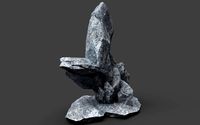
Rock 5-5
...urbosquid
royalty free 3d model rock 5-5 for download as obj on turbosquid: 3d models for games, architecture, videos. (1639063)
3d_export
$5
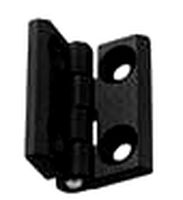
hinge 5
...hinge 5
3dexport
hinge 5
turbosquid
$10
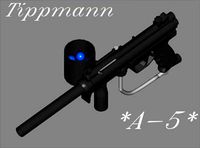
A-5
... available on turbo squid, the world's leading provider of digital 3d models for visualization, films, television, and games.
turbosquid
$2

A-5
... available on turbo squid, the world's leading provider of digital 3d models for visualization, films, television, and games.
turbosquid
$12
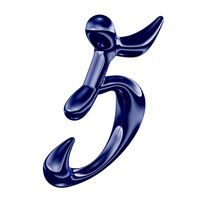
Calligraphic Digit 5 Number 5
...hic digit 5 number 5 for download as max, obj, fbx, and blend on turbosquid: 3d models for games, architecture, videos. (1389333)
3ddd
$1

5 роз
...5 роз
3ddd
5 роз в стеклянной вазе
design_connected
$11

iPhone 5
...iphone 5
designconnected
apple iphone 5 computer generated 3d model.
3ddd
$1
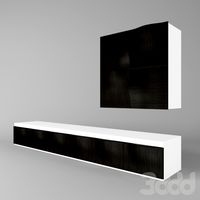
Lola 5
...lola 5
3ddd
miniforms
lola 5 miniforms 300*65*134
3ddd
$1

Nexus 5
...dd
nexus , phone , телефон
google nexus 5 phone
3d_ocean
$15

iPhone 5
...iphone 5
3docean
3d 4d apple cinema iphone model modeling phone screen texture
iphone 5 3d model and texture realistic iphone 5.
4
turbosquid
$9
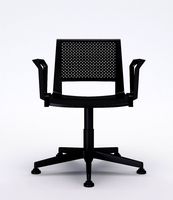
Office Chair 4-4
... available on turbo squid, the world's leading provider of digital 3d models for visualization, films, television, and games.
3d_export
$5

doors- 4
...doors- 4
3dexport
doors 4
3d_export
$5
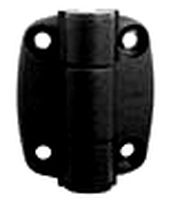
hinge 4
...hinge 4
3dexport
hinge 4
3ddd
$1
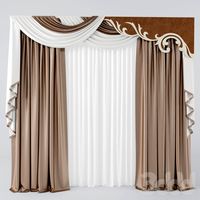
Штора №4
...штора №4
3ddd
штора №4
3d_export
free

playstation 4
...playstation 4
3dexport
playstation 4
turbosquid
$1
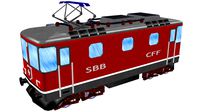
re 4-4 electric locomotive
... free 3d model re 4 4 electric locomotive for download as obj on turbosquid: 3d models for games, architecture, videos. (1707845)
3ddd
$1

nexus 4
...nexus 4
3ddd
lg , телефон
nexus 4
3ddd
$1
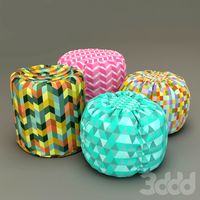
4 Poufs
...4 poufs
3ddd
пуф
4 soft poufs
turbosquid
$12
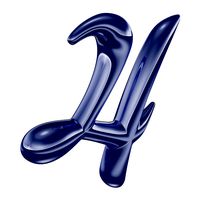
Calligraphic Digit 4 Number 4
...hic digit 4 number 4 for download as max, obj, fbx, and blend on turbosquid: 3d models for games, architecture, videos. (1389332)
3ddd
$1
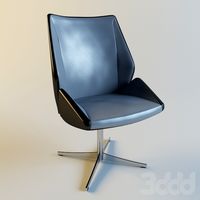
Dauphin 4+
...dauphin 4+
3ddd
кресло
dauphin 4+ конференц кресло
1
turbosquid
$69

armchairs(1)(1)
... available on turbo squid, the world's leading provider of digital 3d models for visualization, films, television, and games.
turbosquid
$15
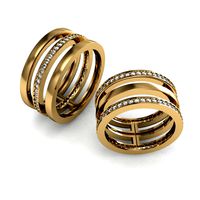
ring 1+1
... available on turbo squid, the world's leading provider of digital 3d models for visualization, films, television, and games.
turbosquid
$10
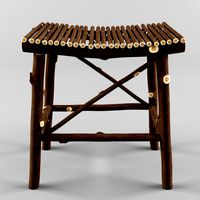
chair(1)(1)
... available on turbo squid, the world's leading provider of digital 3d models for visualization, films, television, and games.
turbosquid
$8

Chair(1)(1)
... available on turbo squid, the world's leading provider of digital 3d models for visualization, films, television, and games.
turbosquid
$2
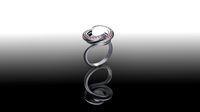
RING 1(1)
... available on turbo squid, the world's leading provider of digital 3d models for visualization, films, television, and games.
turbosquid
$1

house 1(1)
... available on turbo squid, the world's leading provider of digital 3d models for visualization, films, television, and games.
turbosquid
$1

Table 1(1)
... available on turbo squid, the world's leading provider of digital 3d models for visualization, films, television, and games.
turbosquid
$59
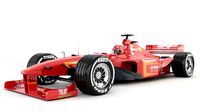
Formula 1(1)
...lty free 3d model formula 1 for download as max, fbx, and obj on turbosquid: 3d models for games, architecture, videos. (1567088)
design_connected
$11

No 1
...no 1
designconnected
sibast no 1 computer generated 3d model. designed by sibast, helge.
turbosquid
$2
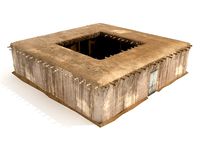
desert house(1)(1)
...3d model desert house(1)(1) for download as 3ds, max, and obj on turbosquid: 3d models for games, architecture, videos. (1055095)
2
design_connected
$11
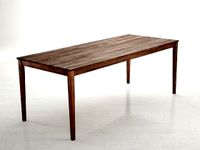
No 2
...no 2
designconnected
sibast no 2 computer generated 3d model. designed by sibast, helge.
turbosquid
$6
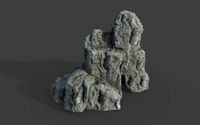
Cliff Rock 2-2
...uid
royalty free 3d model cliff rock 2-2 for download as obj on turbosquid: 3d models for games, architecture, videos. (1619161)
turbosquid
$29

Book variation 2 2
...3d model book variation 2 2 for download as max, obj, and fbx on turbosquid: 3d models for games, architecture, videos. (1366868)
turbosquid
$22

Classic baluster (2) (2)
...assic baluster (2) (2) for download as max, obj, fbx, and stl on turbosquid: 3d models for games, architecture, videos. (1483789)
turbosquid
$99
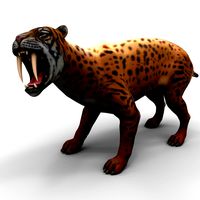
Smilodon 2 Pose 2
... available on turbo squid, the world's leading provider of digital 3d models for visualization, films, television, and games.
turbosquid
$20
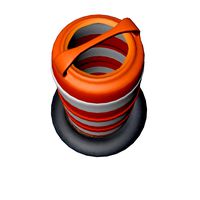
Barrel Barricade 2-2
... available on turbo squid, the world's leading provider of digital 3d models for visualization, films, television, and games.
turbosquid
$6

Wall Trophy (2) (2)
... available on turbo squid, the world's leading provider of digital 3d models for visualization, films, television, and games.
turbosquid
free
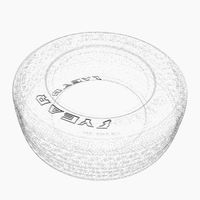
Tire label 2 of 2
... available on turbo squid, the world's leading provider of digital 3d models for visualization, films, television, and games.
3ddd
$1
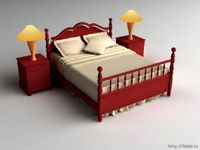
Кровать, 2 тумбочки, 2 светильника
...кровать, 2 тумбочки, 2 светильника
3ddd
кровать, 2 тумбочки, 2 светильника
нормальное качество
формат 3ds max
без текстур
3ddd
free
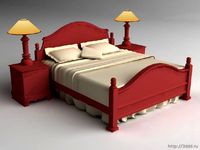
Кровать, 2 тумбочки, 2 светильника
...кровать, 2 тумбочки, 2 светильника
3ddd
кровать, 2 тумбочки, 2 светильника
нормальное качество
формат 3ds max
без текстур
